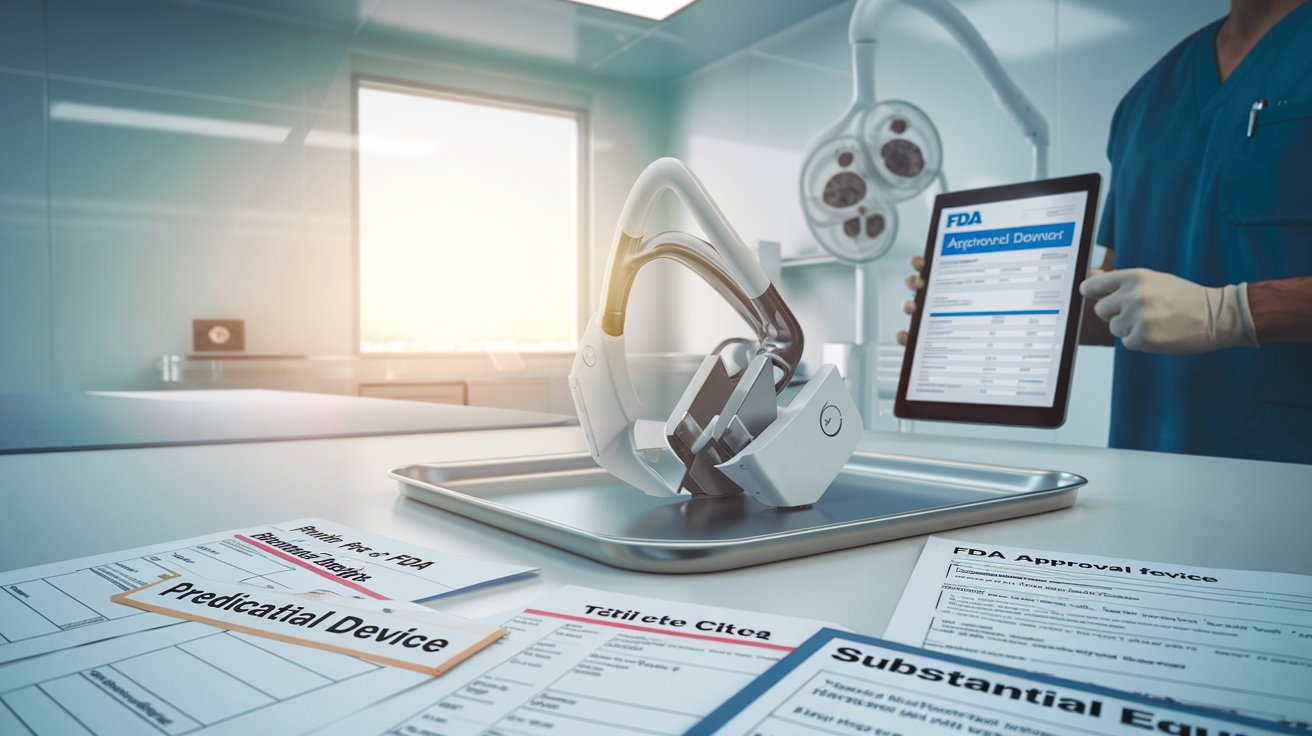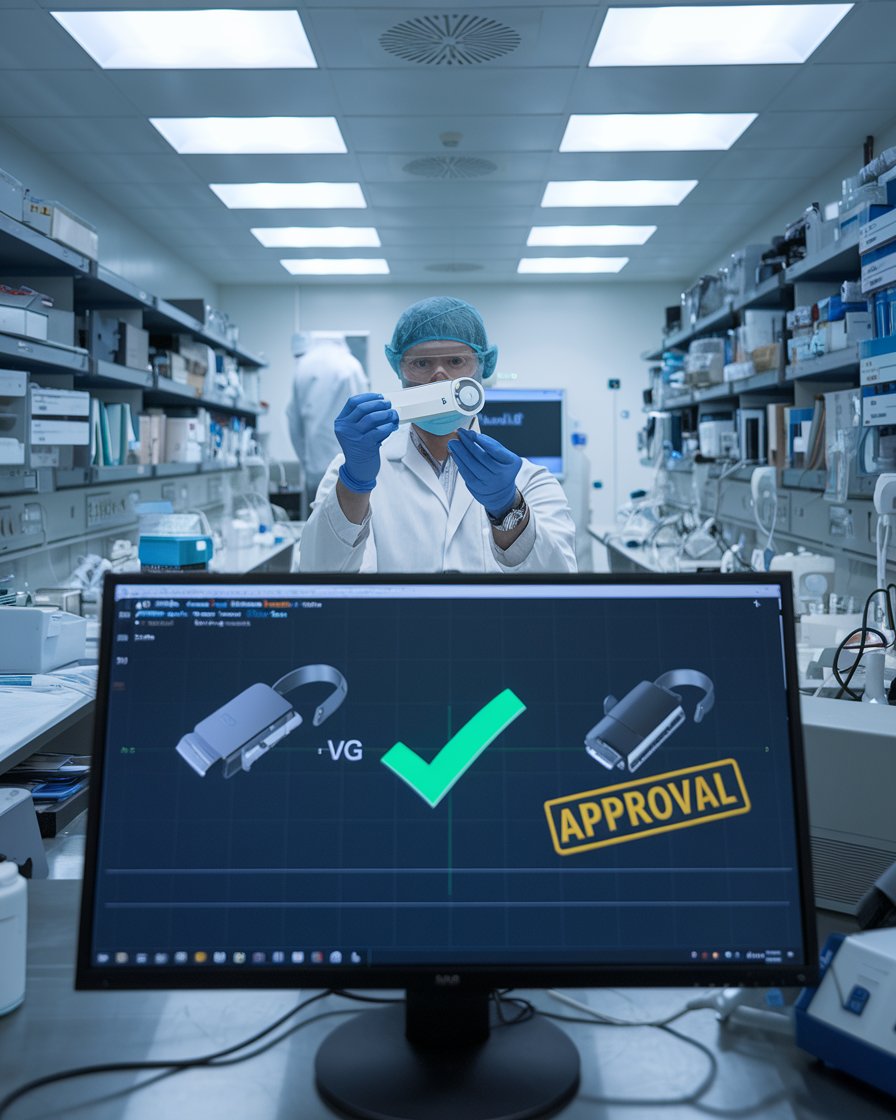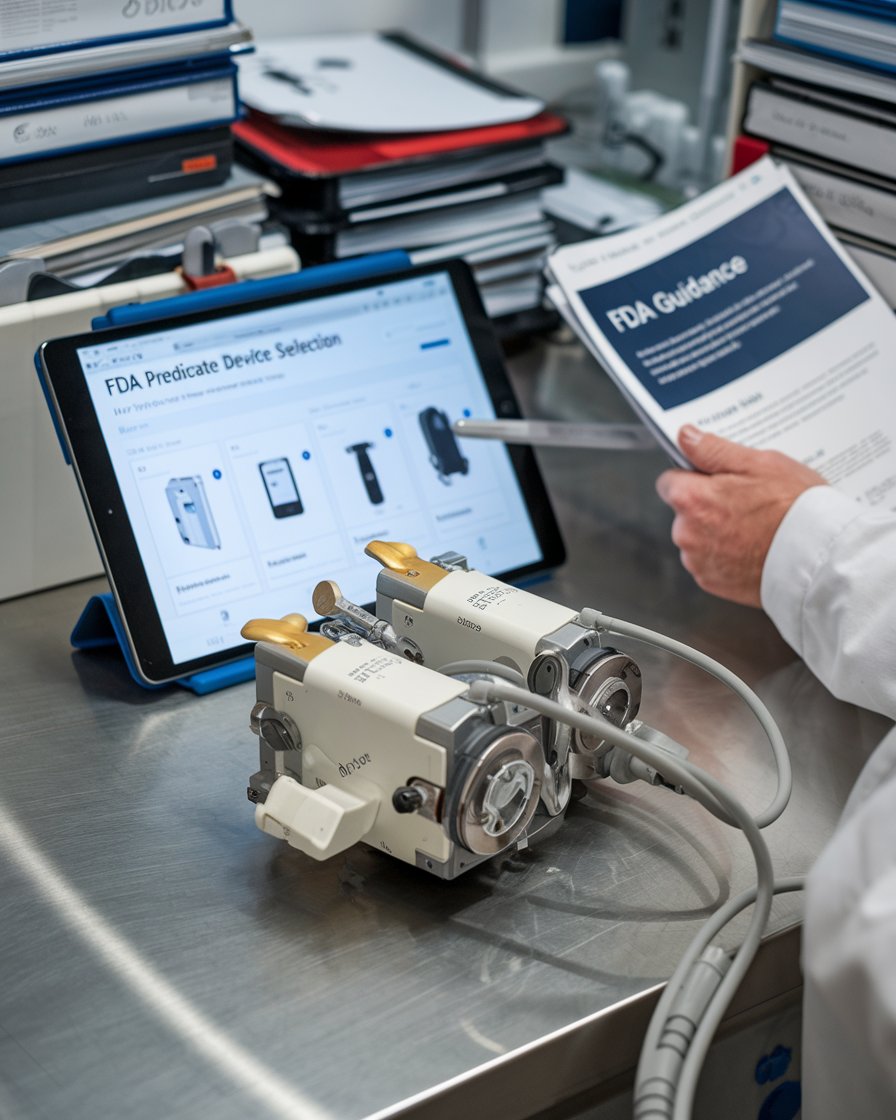Introduction
The FDA’s approval process for new medical devices heavily relies on the concept of substantial equivalence to a predicate device. A predicate device is a legally marketed device that serves as a comparison point for manufacturers seeking approval for a new device. By demonstrating that the new device has similar safety, efficacy, and intended use as the identified predicate device, companies can simplify the FDA clearance process. This comparison, often used for preamendments devices and class III devices, ensures the new medical device does not introduce new risks and is safe for public use.
Using a predicate device allows manufacturers to bypass more rigorous testing, as the FDA considers the device substantially equivalent to one already approved. However, proving substantial equivalence requires a thorough comparison, including the device’s technological characteristics and indications. If a device is not substantially equivalent, additional testing or data may be needed. Choosing the right predicate device is crucial to avoid delays and streamline the approval process.
Key Takeaways
- A predicate device is essential in gaining FDA clearance by serving as a comparison for new devices to prove substantial equivalence.
- Substantial equivalence simplifies FDA approval, allowing manufacturers to bypass rigorous trials if the new device is similar to an approved predicate.
- The FDA requires proof that the new device is as safe and effective as the predicate, especially regarding safety profile and intended use.
- Choosing the right predicate device is crucial to avoiding delays in approval, particularly by ensuring it shares similar technological characteristics.
- Proving substantial equivalence involves a thorough comparison of the new device to the predicate, focusing on purpose, technology, and safety.
- Failure to establish substantial equivalence can lead to costly delays or rejection, requiring additional testing or clinical trials.
Understanding the Role of a Predicate Device in FDA Submissions
A predicate device plays a crucial role in gaining FDA clearance for new medical devices. Medical device manufacturers must compare their new device to one predicate device to establish substantial equivalence. The FDA requires proof that the new device is as safe and effective as the predicate, particularly when it falls into the same class or type. This process, often necessary for preamendments and postamendments devices, simplifies the approval by referencing an already approved device. Without a suitable potential predicate, the approval process may become more complex, requiring more detailed testing and data submission. FDA determines that the device name used for comparison must be valid, or manufacturers may face additional hurdles.
Understanding the Role of a Predicate Device in FDA Submissions
-
What is a Predicate Device?
A predicate device is a legally marketed device used as a point of comparison for a new device during FDA approval. It helps establish that the new device is substantially equivalent in terms of safety, efficacy, and intended use. Without a valid predicate device, the approval process may require additional testing and data submission. -
How the FDA Determines Substantial Equivalence
To establish substantial equivalence, the FDA requires manufacturers to compare their new device to one predicate device. The FDA determines if the new device meets the same safety standards and performs similarly to the predicate device. This simplifies the approval process by reducing the need for extensive clinical trials. -
Importance of Choosing the Right Predicate Device
Selecting a potential predicate device is critical. The chosen predicate must have the same intended use and similar technological characteristics. This ensures the new device can leverage the streamlined process for approval, minimizing delays caused by in-depth testing or additional trials. -
FDA Submission Process for Predicate Devices
During submission, manufacturers must provide evidence that their new device meets the standards of the chosen predicate. This includes submitting the device name, its technological characteristics, and any differences that do not affect safety or performance. Failure to do so can lead to rejection or delayed approval. -
Avoiding Regulatory Delays by Proving Equivalence
When manufacturers fail to prove substantial equivalence to the predicate, the FDA may require more extensive testing. Delays can occur if the new device introduces new risks or differs significantly from the predicate, emphasizing the need for careful selection and comparison.
Why Predicate Devices Matter in FDA Approvals
Predicate devices are essential for FDA approval because they provide a baseline for comparison. By proving that the new device is similar in safety and efficacy to an already approved predicate device, medical device manufacturers can avoid more time-consuming approval processes. The FDA emphasizes that new devices must demonstrate substantial equivalence, meaning they should operate similarly to the predicate. This ensures the new medical device will perform effectively without posing additional risks to patients, streamlining the regulatory pathway.
FDA Requirements for Establishing Substantial Equivalence
The FDA’s process for establishing substantial equivalence requires that the new medical device share the same intended use and safety profile as a predicate device. Manufacturers must show that the new device does not introduce new risks or perform less effectively than the predicate. Scientific methodology or standard reference values must often be submitted to prove the new device is safe and effective for public use. Failure to meet these requirements can lead to significant regulatory delays or rejection.
Substantial Equivalence and Its Impact on Medical Device Approval
Substantial equivalence is a critical concept in FDA’s medical device approval process. To claim that a new device is substantially equivalent to the predicate, manufacturers must show that the device may be used with the same intended use and safety profile as a legally marketed predicate device. The FDA provides guidance on proving that the new device is similar to the device it is compared against in terms of functionality and safety. This comparison for new medical devices helps streamline the approval process, particularly for Class II devices, allowing companies to bypass more rigorous clinical trials. However, failing to demonstrate substantial equivalence can lead to delays in receiving approval.
Case Study: The Approval of a Spinal Implant Through Substantial Equivalence
In 2017, a medical device manufacturer sought FDA approval for a new spinal implant by proving substantial equivalence to a predicate device that was already legally marketed. The manufacturer compared their new implant with an existing Class II spinal device, demonstrating that the new device had the same intended use and similar technological characteristics. They submitted detailed data on the implant’s functionality, focusing on its safety profile and performance in treating spinal conditions.
By following FDA guidance, the company was able to prove that their new device was substantially equivalent to the predicate in terms of safety and effectiveness. This allowed them to bypass more rigorous clinical trials, speeding up the approval process. The successful use of a predicate device in this case not only simplified the pathway to FDA clearance but also provided quicker access to the market, reducing development costs and time.
Key Considerations for Proving Substantial Equivalence
When submitting a new medical device for FDA approval, proving substantial equivalence involves a detailed comparison between the new device and a predicate. This comparison focuses on the device’s purpose, technology, and safety profile. Manufacturers must ensure that the new device meets the same safety standards and performs just as well as the predicate. Any differences must be minor and not affect the overall safety or functionality. By following FDA guidance, companies can speed up their device approval.
Risks of Failing to Establish Substantial Equivalence
Failing to establish substantial equivalence can result in the rejection of a new medical device submission or lengthy delays in the approval process. If a device is not deemed substantially equivalent, manufacturers may need to undergo additional clinical trials or submit more extensive data. This could lead to increased costs and lost market opportunities. Understanding FDA requirements and selecting the right predicate is crucial for avoiding these setbacks and gaining swift approval for new devices.
How to Choose the Right Predicate Device for Your New Medical Device
Selecting the right predicate device is essential for ensuring a smooth approval process with the FDA. Medical device manufacturers must identify a predicate that is substantially equivalent to the new device in terms of safety, efficacy, and intended use. The search for a predicate device should focus on finding one that aligns with the technological characteristics of the new device. FDA guidance also suggests reviewing postamendment devices and other reference devices when looking for a suitable comparison. An effective choice of predicate device can reduce the risk of regulatory issues and delays.
Identifying a Suitable Predicate Device
Choosing the right predicate device is key to navigating the FDA’s approval process efficiently. Manufacturers need to identify a predicate that shares the same intended use and safety characteristics as the new device. Reviewing postamendment devices and other legally marketed devices can help in finding the best match. A suitable predicate device reduces the risk of FDA rejections and can make the approval process smoother, ensuring quicker market access for the new device.
FDA Guidance for Predicate Device Selection
The FDA offers detailed guidance on how to select a predicate device, emphasizing the need for the new device to demonstrate similar safety and efficacy. The device must also be proven to perform effectively in real-world conditions, using scientific data for comparison. The right predicate device ensures manufacturers can submit a strong case for substantial equivalence, minimizing the need for additional testing or regulatory hurdles.
“Science and everyday life cannot and should not be separated.” – Rosalind Franklin
Proving Substantial Equivalence: A Key Step for New Medical Devices
Proving substantial equivalence is one of the key hurdles for manufacturers developing a new medical device. This process involves providing evidence that the new device has similar technological characteristics and functions as a predicate device. The FDA will review submissions to determine if the new device can be considered as safe and effective as the predicate device in question. Manufacturers must ensure their device meets the necessary benchmarks for efficacy, often submitting clinical data and research to back their claims. The right preparation can make the difference in a quick approval process.
Steps to Prove Substantial Equivalence to a Predicate Device
Proving substantial equivalence requires following a series of steps laid out by the FDA. Manufacturers must first identify a predicate device that shares the same intended use. They must then demonstrate through scientific data that the new device meets or exceeds the safety and efficacy standards of the predicate. FDA clearance relies on showing that the new medical device does not pose new risks, and the right documentation and evidence are crucial for achieving approval.
Common Challenges in Demonstrating Substantial Equivalence
Manufacturers often face challenges when attempting to prove substantial equivalence. Differences in technology or intended use between the new device and the predicate can complicate the process. The FDA may request additional data or require further testing if the new device is not clearly comparable to the predicate. By preparing thorough documentation and carefully selecting a predicate device, manufacturers can overcome these challenges and avoid delays in the approval process.
Conclusion
In conclusion, using a predicate device is a critical step in gaining FDA clearance for new medical devices. By demonstrating that the new device is substantially equivalent to a legally marketed predicate, manufacturers can simplify the approval process, ensuring the device is safe and effective for public use. This process helps avoid more rigorous testing and streamlines the pathway for devices to be marketed.
Choosing the right predicate device is essential to ensure that the new device meets FDA requirements, particularly in terms of safety and technological characteristics. Manufacturers must demonstrate that their device has a similar purpose, function, and effectiveness as the predicate. Proper comparison, data submission, and following FDA guidance are crucial for approval. The right strategy can prevent delays and ensure that the device is considered for timely approval.













